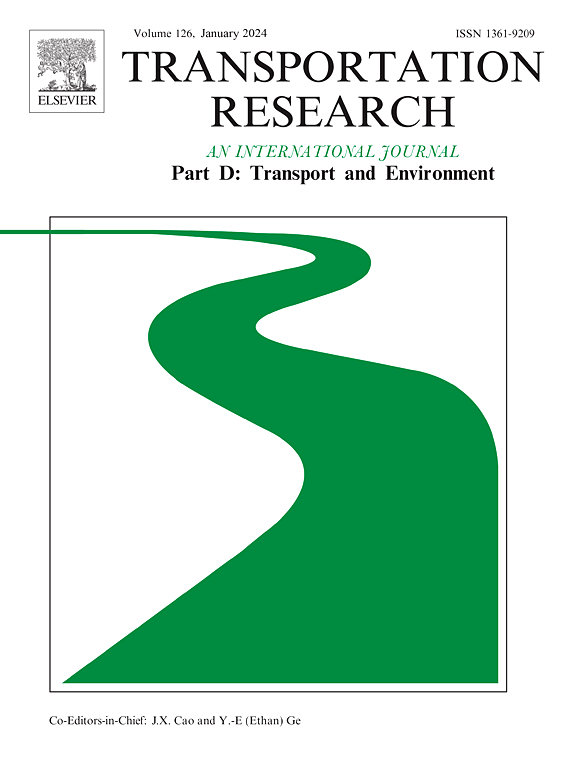Retrofitting green spaces based on dispersion and absorption of mobile-source carbon emissions
IF 7.3
1区 工程技术
Q1 ENVIRONMENTAL STUDIES
Transportation Research Part D-transport and Environment
Pub Date : 2025-06-17
DOI:10.1016/j.trd.2025.104874
引用次数: 0
Abstract
Although green space is a potential solution for growing carbon emissions in transportation sector, mobile-source CO2 (MS-CO2) neutrality-oriented layouts and planting configuration for urban green spaces remains a challenge. We propose to develop a MS-CO2 Mitigation Framework that innovatively combines a range of computational mechanisms and techniques for CO2 emission, dispersion, and absorption. We found MS-CO2 dispersion and absorption were disproportionate with the increase of emission intensity related to traffic volume and speed of expressway, arterial, or minor roads in Xi’an China. The green spaces in the existing layout offered MS-CO2 absorption efficiency ranged from 30.71% to 88.63%, and the retrofitting schemes, through adjusting spatial layout and introducing species with high CO2 absorption rate, improved it by 1.15% to 34.72%. It is possible to achieve neutralization of traffic carbon emissions for lower emission intensity through green space retrofitting, otherwise, additional non-vegetation-based measures are needed for improvement of CO2 sequestration.
基于移动源碳排放的分散和吸收改造绿色空间
虽然绿色空间是解决交通部门碳排放增长的潜在解决方案,但以移动源二氧化碳(MS-CO2)中性为导向的城市绿色空间布局和种植配置仍然是一个挑战。我们建议开发一个MS-CO2减缓框架,该框架创新性地结合了一系列二氧化碳排放、扩散和吸收的计算机制和技术。研究发现,西安市高速公路、主干道和次要道路的交通流量和速度与排放强度的增加不成比例。现有布局下绿地的MS-CO2吸收率为30.71% ~ 88.63%,改造方案通过调整空间布局和引入高CO2吸收率树种,将绿地的MS-CO2吸收率提高了1.15% ~ 34.72%。通过绿化改造可以在降低排放强度的情况下实现交通碳排放的中和,否则,需要额外的非植被措施来改善二氧化碳的固存。
本文章由计算机程序翻译,如有差异,请以英文原文为准。
求助全文
约1分钟内获得全文
求助全文
来源期刊
CiteScore
14.40
自引率
9.20%
发文量
314
审稿时长
39 days
期刊介绍:
Transportation Research Part D: Transport and Environment focuses on original research exploring the environmental impacts of transportation, policy responses to these impacts, and their implications for transportation system design, planning, and management. The journal comprehensively covers the interaction between transportation and the environment, ranging from local effects on specific geographical areas to global implications such as natural resource depletion and atmospheric pollution.
We welcome research papers across all transportation modes, including maritime, air, and land transportation, assessing their environmental impacts broadly. Papers addressing both mobile aspects and transportation infrastructure are considered. The journal prioritizes empirical findings and policy responses of regulatory, planning, technical, or fiscal nature. Articles are policy-driven, accessible, and applicable to readers from diverse disciplines, emphasizing relevance and practicality. We encourage interdisciplinary submissions and welcome contributions from economically developing and advanced countries alike, reflecting our international orientation.

 求助内容:
求助内容: 应助结果提醒方式:
应助结果提醒方式:


